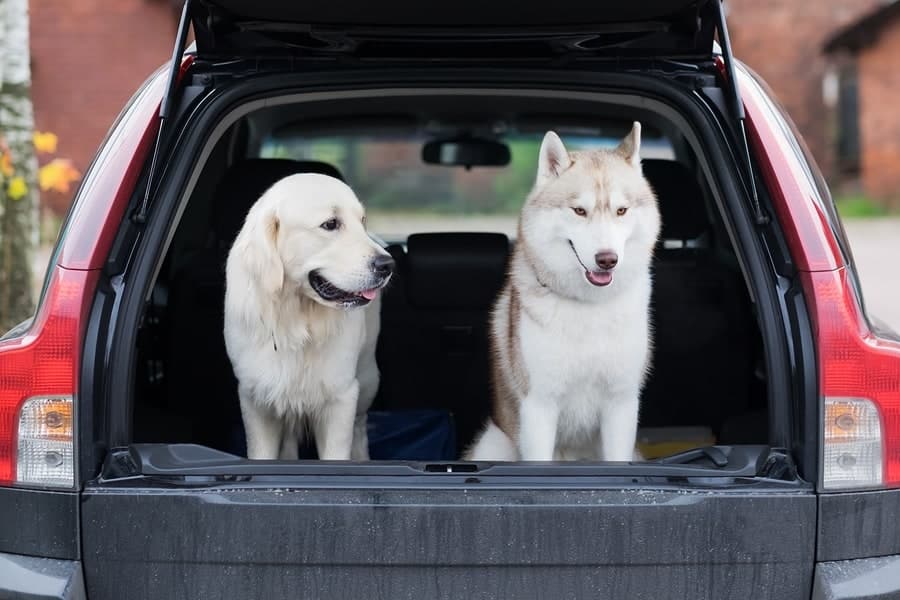
There’s a saying in show business that you should never work with children or animals. It’s because they both require special attention, and nowhere is that truer that in the back of your car. Children need entertainment and breaks whilst your dogs may need similar attention, there are definite differences. How can you best maximise your dog’s comfort, keeping it calm and undisruptive on a car journey?
Why Constrain Your Dog?
It’s vital to ensure your dog is secure in the car when you’re on the road. Some of the most important reasons include:
- Safety – a restraint will protect both them and you in the event of a car crash. If your dog is loose in the car, then the momentum of the vehicle in an accident could dramatically increase its impact, causing considerable harm to all involved.
- Distractions – a dog that’s free to roam in a car could jump or move suddenly, causing a loss of attention to the driver that will be hazardous at any speed.
- Legal responsibility – the Highway Code states that all animals need to be restrained in the car. If you are in breach of these rules, then you could be fined for driving without proper care and attention.
- Insurance costs – most insurance cover requires you to restrain your dogs in a vehicle due to free roaming animals increasing your chances of something going wrong on the road.
Dog Restraints
There are a several different methods of restraining a dog, ranging from special dog seat-belts and harnesses, through to complete boxes and carrier systems that can contain a dog. One of the most basic forms of restraint is the dog guard type partition for cars with larger boots, but these will not protect your dog in an accident.
Points of Consideration when Travelling with a Dog
There are some very easy steps you can take to give your pet maximum comfort when in the car:
Before you get out on the road:
- Take water on board – dogs will often want to drink, and thirst makes them anxious. Carry water to refresh them especially on hotter days.
- Start them young – get them used to your car and the restraints when they are a pup, to acclimatise your dog to your vehicle.
- Prepare your dog for longer trips – by taking them on lots of short journeys, but gradually increasing the mileage, so they are able to cope with a longer time in the car.
- Switch off the passenger airbag – as the passenger-side bags could potentially hurt your dog, if it is situated in a harness in the front seat.
- Make sure your dog is chipped – dogs need to have identification chips alongside a collar and physical ID tag under law after 8 weeks. If you make a casual stop and your dog wanders off this can be essential in helping locate them again.
- Don’t feed your dog – just before your journey, as a full stomach could result in upsets and motion sickness, the last thing you want when actually travelling.
- Take food with you – small snacks can help if you get stuck in traffic jams or have to travel on a longer than normal journey, helping keep your dog happy.
When you’re out on the road:
- Regular stops – especially for bigger dogs to run around, but every type of hound will want to relieve itself at some point, and the last thing you want is mess in the car.
- Window shades – dogs can get very hot on a sunny day in the back of your car, especially when you factor in all around windows. Shades help block out the light, keeping the temperature of the car at a lower level.
- Help your dog relax – nothing is worse than travelling with a stressed out animal in the back of the car. Do whatever you can to help them relax – this could be someone sitting in the back seat, or giving them a favourite toy.
- Take your dog to fun places – if the only place your dog ever visits in the car is the vet, this will mean that it associates car journeys with this place. Go out on adventures with your dog to fun locations, and it will start to associate the car with good times.
- Careful driving – make sure you adopt a steady and secure driving style when out on the road. Sudden turns and braking could cause your dog to experience motion sickness and discomfort.
- Don’t let dogs hang out of the window – this can cause some horrible situations if you pass too close to another vehicle.
- Open up the windows – if your dog is properly restrained then it’s safe to open the windows to get plenty of cool, fresh air into the vehicle.
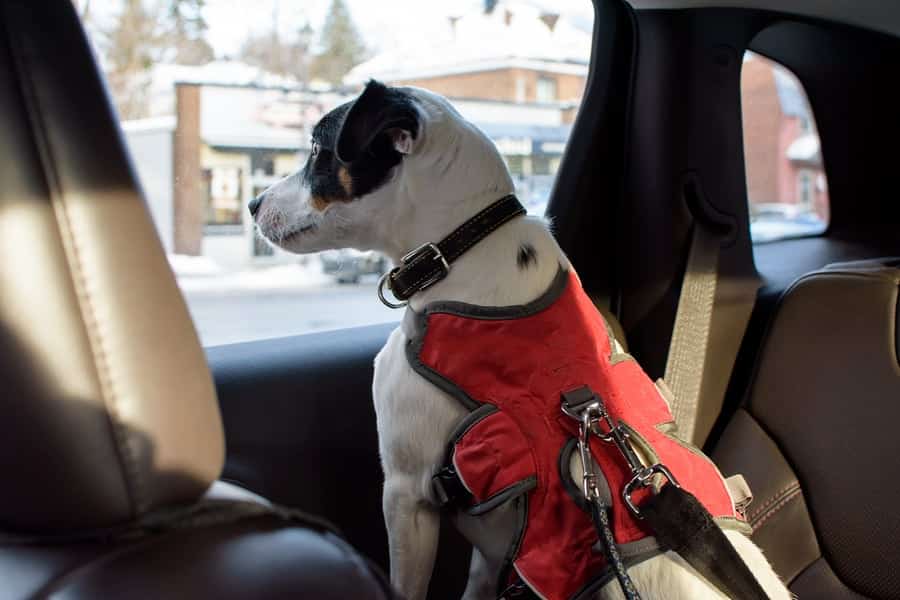
How to comply with the law
Amanda Stretton , Motoring Editor at Confused.com says:
“Most dogs will need to travel in the car at some point, but most drivers aren’t aware of the special attention they require, or just as important, the attention you might draw to your vehicle!
“Drivers that don’t properly restrain their dogs face fines up to £2,500. Equally, driving with an unrestrained pet can invalidate your car insurance, meaning having to personally pay out for repairs in the event of a claim.“
And Finally
Take extra care when the seasons change. Baking temperatures quickly cause dogs to become dehydrated and can even cause premature death. Never leave a dog in a car during the summer. And if you see any dog in a car experiencing distress then alert the police or the RSPCA on their 24 helpline number of 0300 1234 999.

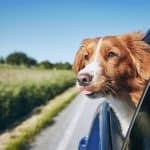

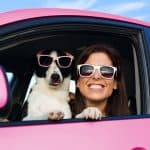
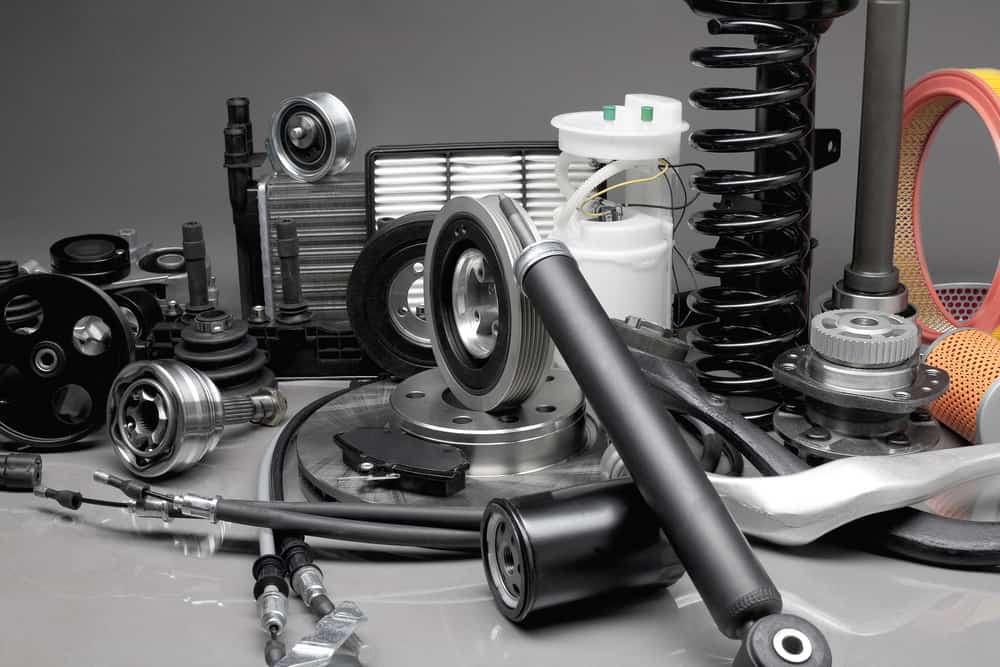




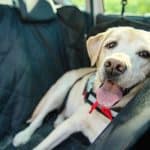


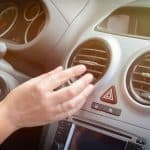
.png)